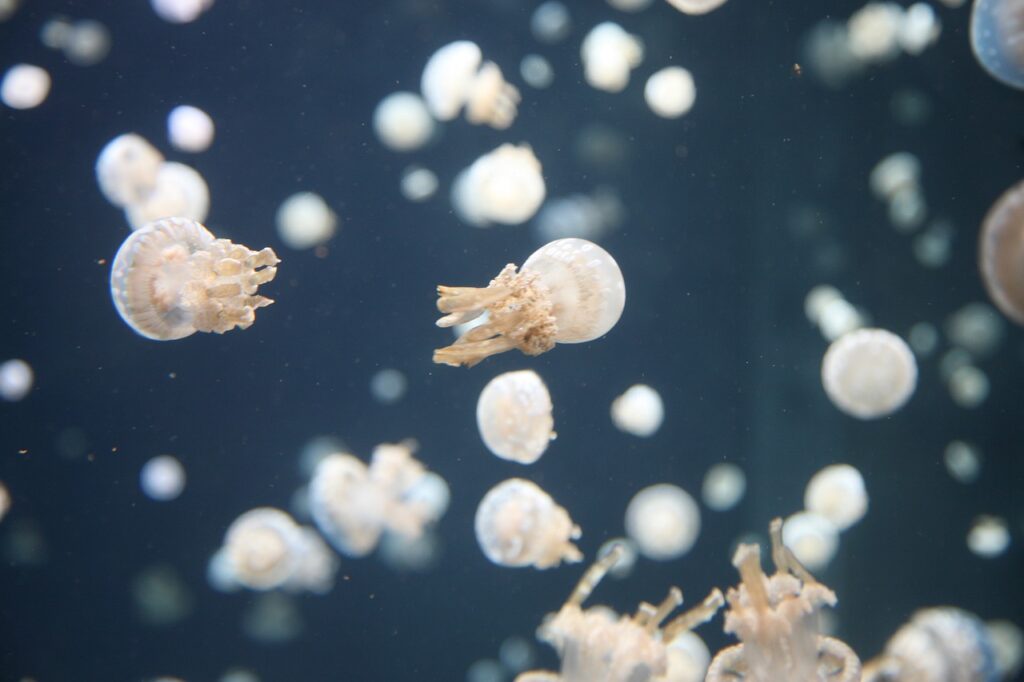When setting up your aquarium, finding the perfect spot in your home is a crucial first step. Not only do you want to showcase your fish in a visually appealing way, but you need to make sure your aquarium is in a practical location with easy access for maintenance.
Consider factors such as natural lighting, temperature, and proximity to electrical outlets. You also want to make sure your aquarium is not in direct sunlight or near sources of heat or cold drafts.
Another important aspect is ensuring your aquarium is placed on a sturdy surface, as it can be heavy when filled with water. Consider using a stand designed specifically for aquariums or a solid piece of furniture.
Take your time in selecting the perfect location, as it will set the foundation for your fish tank. Once you choose the spot, you can then move on to designing and decorating your aquarium to create a beautiful and healthy habitat for your aquatic pets.
Decorating the Tank
When it comes to creating the perfect aquarium for your fish, decorating the tank is just as important as choosing the right location and selecting the appropriate fish. Adding creative and unique touches to your aquarium can not only enhance its visual appeal, but also provide a more comfortable and natural environment for your fish.
One way to decorate your tank is by utilizing live plants. Not only do they add a pop of color and texture, but they also provide oxygen and keep the water clean. When selecting live plants for your aquarium, it’s important to choose ones that are compatible with the type of fish you have and the conditions of your tank.
Another way to enhance the visual appeal of your tank is by incorporating natural elements such as rocks and driftwood. Not only do they provide hiding spots for your fish, but they also create a more natural and authentic environment. Make sure to thoroughly clean and sanitize any natural elements before placing them in your aquarium.
Finally, consider adding decorative elements such as small figurines or fake coral to add a unique touch to your tank. Just be sure to avoid overcrowding the tank and creating a cluttered environment that can be stressful for your fish. By taking the time to decorate your tank, you can create a visually stunning and comfortable home for your aquatic friends.
Utilizing Live Plants
Using live plants in your aquarium offers a range of benefits for both the physical and mental health of your fish. Live plants help to oxygenate the water, absorb harmful chemicals, and provide natural hiding spots for your fish. They also add a visually appealing element to your setup and can create a more natural environment for your fish to thrive in.
When selecting live plants for your aquarium, consider the size and type of your fish, as well as the lighting and temperature requirements of the plants. Some popular options for aquarium plants include Java fern, Anubias, and Amazon sword plants.
Proper care and maintenance of your live plants is essential to their growth and longevity. This includes providing adequate lighting, CO2 supplementation, and regular fertilization. It is also important to monitor for any signs of disease or parasites that may affect the health of your plants or fish.
Overall, utilizing live plants in your aquarium is a simple and effective way to create a healthier and more natural environment for your fish to thrive in. With proper care and maintenance, your live plants will not only enhance the visual appeal of your aquarium, but also provide a range of benefits for your fish’s overall well-being.
Incorporating Natural Rocks and Driftwood
When it comes to creating an appealing environment for your fish, incorporating natural elements like rocks and driftwood can make all the difference. Not only do they enhance the visual appeal of your tank, but they also provide hiding spots for your fish.
When selecting rocks for your tank, it’s important to choose ones that are aquarium-safe and won’t affect the pH level of the water. Common options include lava rock, slate, and quartz. You can also add depth to your tank by stacking rocks and creating caves and crevices for your fish to explore.
Driftwood is another great addition to any aquarium, providing a more natural and organic look. Like rocks, it’s important to choose driftwood that is aquarium-safe and has been properly treated to remove any potential toxins. It’s also important to note that some types of driftwood may release tannins into the water, causing a yellowish-brown tint. While harmless, this can be visually undesirable for some tank owners.
When adding natural elements to your tank, it’s important to consider the overall aesthetic and how the rocks and driftwood will fit in with the other decorations and fish in the tank. It’s recommended to add these natural elements before adding any fish to the tank, as rearranging rocks and driftwood can be disruptive to the fish.
Overall, incorporating natural elements like rocks and driftwood can provide a visually appealing and more natural environment for your aquarium. Just be sure to choose aquarium-safe options and consider the overall aesthetic of your tank.
Selecting the Right Fish
When selecting fish for your aquarium, it’s important to consider a few key factors. First and foremost, you must take into account the size of your tank and the species of fish that can comfortably live within it. Certain fish require more space than others, and overcrowding can lead to aggression and stress among your aquatic pets.
Temperament is another crucial consideration when choosing fish. Some species are more aggressive and territorial, while others are peaceful and get along well with others. Mixing incompatible fish can lead to fights and even death.
It’s also important to consider the compatibility of different species when selecting fish. Some species have specific water requirements or dietary needs, and may not thrive in the same tank as others. Researching the compatibility of different fish species before making your selections can ensure a harmonious and healthy habitat for your aquatic pets.
Creating a balanced ecosystem within your aquarium takes some careful planning and consideration, but the end result is a beautiful and thriving underwater world. Remember to choose fish that are appropriate for your tank size and compatible with one another, and your aquarium will be a source of enjoyment and relaxation for years to come.
Exploring Different Breeds
When it comes to selecting fish for your aquarium, it is important to understand the different breeds that are available and the care that they require. There are various types of fish, such as freshwater and saltwater, each with their own unique characteristics and needs.
One important aspect to consider when selecting fish is their temperament and compatibility with other fish in your aquarium. Some breeds may be more aggressive and territorial, while others may be more peaceful and social. It is crucial to research and select fish that will coexist well with each other in your aquarium.
Another factor to consider is the size of the fish and the size of your aquarium. It is important to select fish that will comfortably fit in your aquarium and allow for proper swimming space. Overcrowding can lead to stress and health problems for your fish.
Some popular breeds for aquariums include bettas, guppies, tetras, and angelfish. Each of these breeds has their own unique characteristics and care requirements. Research and understanding of the different breeds will ensure that you select the right fish for your aquarium.
Proper care and maintenance of your aquarium and fish is crucial for their health and longevity. Regular water changes and proper feeding schedules are important for maintaining a healthy environment for your fish. It is also important to monitor for any common problems, such as algae growth or fish illness, and address them promptly to ensure the well-being of your aquatic pets.
Creating a Balanced Habitat
Creating a balanced habitat for your aquarium is crucial in ensuring the health and happiness of your fish. This involves combining fish with different needs and habits to create a harmonious and natural environment.
One important aspect to consider is the compatibility of your fish. Some fish may be aggressive and territorial, while others prefer a more social environment. It’s important to research each species and their behaviors before introducing them to the tank.
Another factor to consider is the size and type of fish you choose. Larger fish require more space and can potentially harm smaller fish. It’s important to choose fish that are similar in size and have compatible behaviors.
In addition to the fish, it’s important to create a suitable environment for them. This can include adding hiding spots with rocks and driftwood, as well as utilizing live plants to provide oxygen and enhance the natural aesthetic of the aquarium.
To maintain a balanced habitat, it’s important to monitor the behavior and health of your fish. Regular water changes and proper feeding schedules can also contribute to a healthy and thriving aquarium environment.
Maintaining Your Aquarium
Maintaining your aquarium is essential for the health and well-being of your fish. One important aspect of maintaining your aquarium is performing regular water changes. This involves removing a portion of the water from your aquarium and replacing it with fresh, clean water. The frequency of water changes will depend on the size of your aquarium and the number of fish you have, but generally, it is recommended to perform a 25% water change every two weeks.
Proper feeding schedules are also crucial for maintaining a healthy aquarium. Overfeeding can lead to poor water quality and can cause health issues for your fish. It is recommended to feed your fish small, frequent meals throughout the day instead of one large feeding. This will help prevent overfeeding and keep your water quality in check.
Another important aspect of aquarium maintenance is ensuring that your filter is functioning properly. Your filter is responsible for removing debris and waste from your aquarium, and if it is not functioning properly, it can lead to poor water quality and health issues for your fish. Make sure to clean your filter regularly and replace any worn-out parts.
Finally, keeping an eye out for common problems such as algae growth and fish illness is essential for maintaining a healthy aquarium. Regularly monitoring your water quality and performing routine maintenance can help prevent these issues from arising in the first place.
Preventing Common Problems
Keeping your aquarium healthy and clean is crucial to the well-being of your fish. One of the most common problems that can arise in maintaining an aquarium is algae growth. While algae is a natural occurrence, it can quickly take over your tank if left unchecked. To prevent algae growth, it’s important to regularly clean your tank and maintain a proper balance of light and nutrients.
Another common issue in aquarium maintenance is fish illness. Fish can become sick for a variety of reasons, including poor water quality, improper feeding, and stress. It’s important to monitor your fish’s behavior and appearance regularly to spot any signs of illness early. If you notice any abnormalities, take action immediately to prevent the spread of disease.
By identifying and addressing common problems in aquarium maintenance, you can keep your fish healthy and your tank looking beautiful. Regular maintenance and attention to detail are key to preventing issues from arising. With proper care, your aquarium can be a beautiful and thriving oasis for your fish for years to come.
Creating a Routine
To ensure that your aquarium remains healthy and vibrant, it is important to create a routine for maintenance. This includes regular water changes, testing the water parameters, and proper feeding schedules. It is recommended to change 20% of the aquarium water every two weeks to remove any excess waste and chemicals. Testing the water weekly can help ensure that the water parameters are within the proper range for your fish. Proper feeding schedules and amounts will also help keep the aquarium environment healthy for your fish.
In addition to these basic maintenance tasks, it is important to also address any issues that may arise. This includes identifying and treating common problems such as algae growth or fish illness. By catching these issues early and addressing them promptly, you can prevent more serious problems from developing.
Creating a routine for maintenance also means establishing a schedule that works for you and your lifestyle. This can include setting reminders on your phone or calendar to help ensure that you don’t forget any important tasks. Being consistent with your routine will help keep your aquarium looking and functioning at its best.



